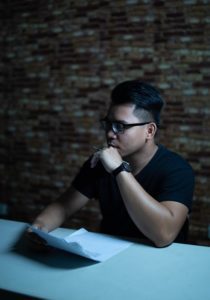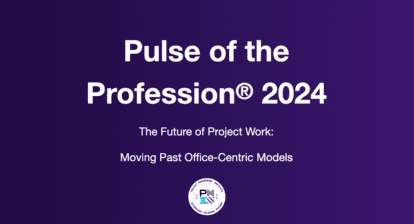 One of the most frequently asked questions when someone is about to start a new task is likely, “how much time will it take?”
One of the most frequently asked questions when someone is about to start a new task is likely, “how much time will it take?”
Time is limited. Our lives are limited, and unfortunately, we just cannot wish away time limitations. That is why duration estimation is one of the most important aspects of project management.
Sometimes, the above question is not directly asked; however someone still imposes a deadline. Your client or manager might direct you to finish a given task by a certain date. Now, even if you have to move mountains, you will try to complete the task in the designated timeframe.
In most real life scenarios, clients and mangers are reasonable, giving us some freedom to determine duration estimates for doing our tasks, but this can create other problems. Let’s take a look at one such real life scenario.
The Estimation Problem
Imagine your company has been in discussion with a prospective client. You’ve provided a proposal for a new project and are at the stage of hashing out the finer details.
You might hear from the client that the estimates look high. You might explain why you believe the estimates are reasonable based on underlying assumptions. But then, the whole discussion may veer towards the topic of project assumptions. Your client wants to know why you are making assumptions and why you can’t provide exact estimates.
Hmmm…. Can there be “exact estimates”? According to Merriam Webster, the meaning of estimate is “to judge tentatively or approximately…” or “to determine roughly…”
“Exact estimates” sounds to me like an oxymoron. Nonetheless, let’s discuss it further.
Exact Estimates
Humoring our client for a moment, let’s assume that exact estimates are possible and that we can determine exact duration before starting a task.
We want to know how long it will take to make a trip from New York to Washington DC by bus. We start by talking to a Greyhound bus driver. Our hypothetical conversation might go on like this:
Me: Sir, how much time will it take to go from New York to Washington DC?
Driver: It will take 4 hours and 50 minutes.
Me: How can you be so sure?
Driver: Hey! Are you doubting my ability? I have been driving between New York and Washington DC for donkey years. I am an expert driver.
Me: Ah! OK. Is that the exact duration?
Driver: Yep. More or less. Give or take 10 minutes.
Me: Why can’t you give me an exact figure?
Driver: Well, it depends on a lot of factors like traffic, weather, time of the day, etc.
Me: Can you confirm that if I take your bus, I will be able to reach Washington DC in 5 hours or less.
Driver: Most likely, yes.
Me: Why are you saying most likely?
Driver: Like I said, the journey time depends on a lot of factors. On most days the journey will take less than 5 hours, but on some days you might need a few more minutes.
Me: So, 5 hours is just an estimate?
Driver: If you say so.
Me: Did you make any assumptions to arrive at this estimate?
Driver: Like I said, I am an expert driver. No assumptions here.
You can see the circular reasoning of exact estimates, can you not? The driver might say he is not making any assumptions. However, he is assuming that the journey will be done using his bus (not any bus, but his bus), that he will start at a certain time of day, that he will make one rest stop on the way, that the traffic conditions will be normal, and that there would be no events like a breakdown, etc.
The driver’s estimation might be very good, but it is not exact.
Accurate Estimates
You might be thinking now that there are better methods for estimating the time of such a journey. There are. Let’s take a look at a more scientific method.
We could use a popular mapping tool to find the duration estimate. Just open your favorite app and enter the journey details. Viola! It will immediately show you a duration estimate.
The mapping app will take mode of transport, route, current traffic, and current weather into consideration before giving you an estimate. Let’s say it shows 3 hours and 50 minutes.
Is that an exact estimate?
Hardly. You can never be sure that the journey will take exactly 3 hours and 50 minutes. It is; however, a more accurate estimate.
The traffic conditions can change while you are driving. You may feel tried and drowsy while driving. You may want to drive slower or faster than the app’s speed estimate. You may be forced to take a break. What if your car breaks down?
Even after using modern technology, you still cannot determine an exact estimate. Your estimate will still be based on a host of assumptions. These assumptions are called “basis of estimate.”
The exact duration is determined only after a task is complete.
How to Find Assumptions
Let us revisit the project example that I mentioned at the beginning of this article. The client wants to exploit the power of the search engines and social media to increase its ecommerce sales. Your company has already given task estimates to the prospective client for this digital marketing project, but the client has not yet agreed to them.
You may have started with the scope of the project and listed the factors that could influence the estimation. Following is a partial list of some general factors that would be considered when sizing the project and doing the estimation:
- Periodic communication with the client
- Start of engagement and initial hand-holding
- Total duration of the engagement
- Training of team members on the client’s ecommerce platform
- Design and aesthetics of client’s website and mobile app
- Proposed contractual terms and conditions
This is not a complete list, but when analyzing these, one would have come up with a number of assumptions. The bottom line is that the estimates outlined in a proposal would be heavily influenced by these assumptions.
You, too, can list project assumptions in a similar manner. Start by understanding the scope. Then, list factors that can impact the duration, and you’ve made your list of assumptions.
You should reduce the number of assumptions as much as possible. The higher the number of assumptions, the greater the risk to the project. This can be done by defining the project requirements in detail. You can reduce the number of assumptions, but you can never eliminate them.
Of course, extra time is required to define requirements in greater detail. Even if you define project requirements in minute detail, there will always be some assumptions. You will need to find a balance between the time you are willing to spend on the requirements and risk that you are willing to take because of the number of assumptions.
Take care of the assumptions and reduce the business risk by adding appropriate buffers to your estimation.
Project Tasks and Assumptions
The journey from New York to Washington DC was an example of an operational task. Such tasks have very few unknowns. An estimate for such tasks can be very accurate, but it will still not be exact.
On the other hand, most project tasks have a lot of unknowns. The number of project task assumptions far exceed that of an operational task. It is extremely difficult to find an accurate estimate for such tasks, let alone an exact estimate.
Conclusion
Bottom line? Task estimation cannot be done without making assumptions. The number of assumptions can be reduced if the requirements are clear and there are only a few unknowns. The accuracy of estimation depends on the number and nature of assumptions.
What is your take on assumptions?
Have you estimated anything without making any assumptions? If yes, how?
Have you been forced to provide best case estimates without considering the assumptions? What happened as that project played out?
I would love to hear your comments below.








Eric Uyttewaal
Praveen, great article: You show how estimating always needs making assumptions, whether those assumptions are made explicit or not.
Robert
Thanks for the great article Praveen. Is there a process to quantify impacts of assumptions? In IT tasks there are many assumptions. How do we quantify or weigh their potential impacts to the estimate to get a confidence level for the estimate?